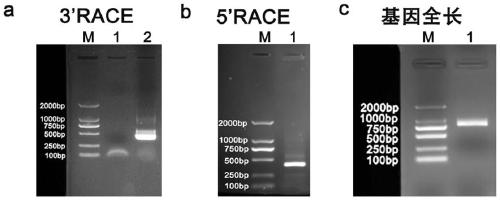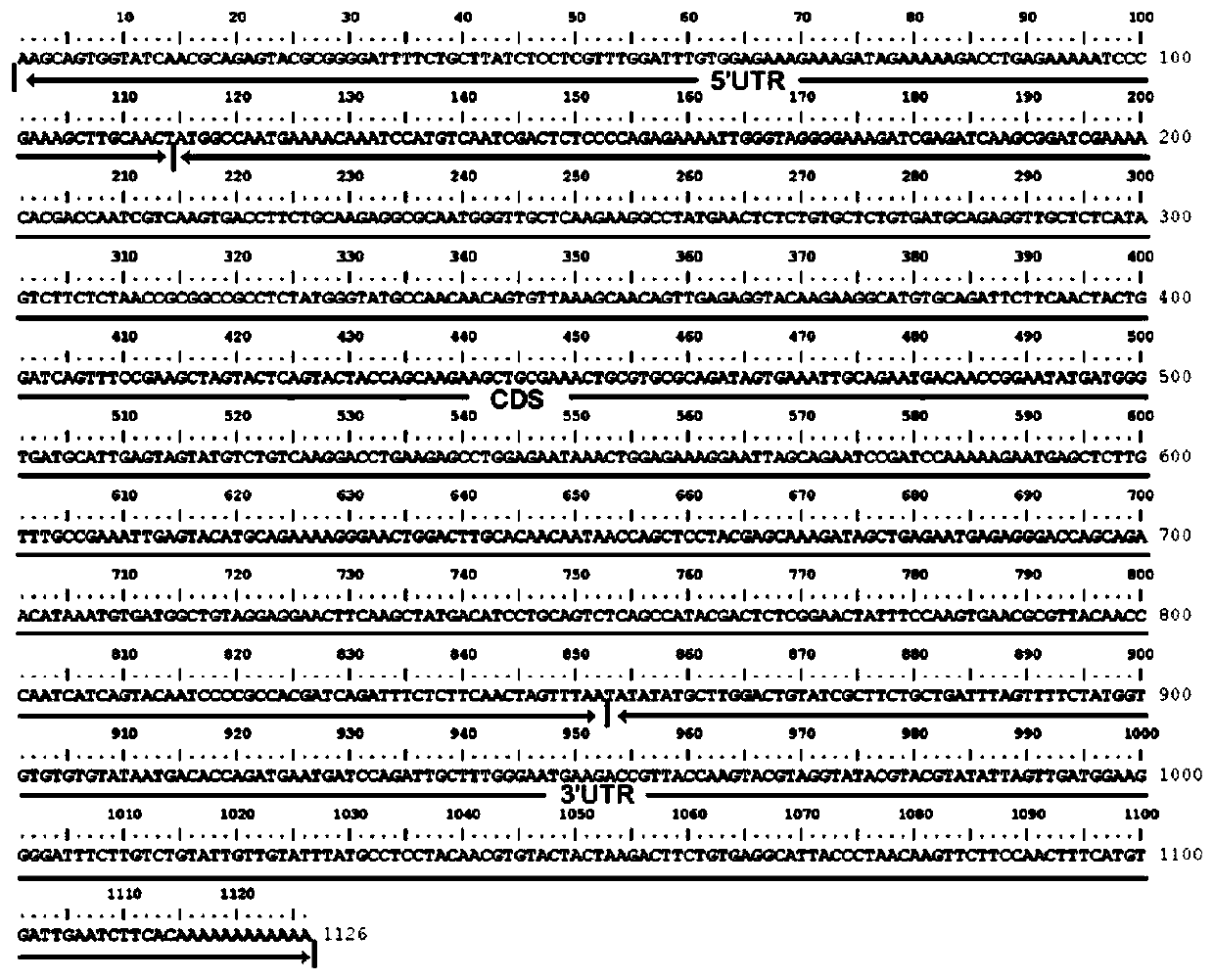EjAG gene of loquat, protein encoded by EjAG gene and application
A loquat and protein technology, applied in the application, genetic engineering, plant genetic improvement and other directions, can solve the problem that there is no AG homologous gene research report and other problems, reduce the number of petals and the number of rounds, have a good application prospect, and restore stamens and pistils. effect of structure
- Summary
- Abstract
- Description
- Claims
- Application Information
AI Technical Summary
Problems solved by technology
Method used
Image
Examples
Embodiment 1
[0023] Cloning of embodiment 1 loquat EjAG gene cDNA sequence
[0024] (1) Extraction of loquat flower bud total RNA
[0025] Collect fresh loquat flower buds at the dew-white stage, put them into cryopreservation tubes, freeze them quickly in liquid nitrogen, and put them in a -80°C ultra-low temperature freezer for later use. Use the RNA extraction kit to extract total RNA: Take 0.2 mg of the material from the -80°C refrigerator, put it into a mortar with 2 mL of lysate and 200 μL of PLANTaid, and grind thoroughly; transfer the grinding liquid into a 2 mL EP tube, and centrifuge at 13,000 rpm After 10 minutes, take 500 μL of the supernatant and transfer it to a new 1.5 mL centrifuge tube; add 250 μL of absolute alcohol to the supernatant, and mix by pipetting; add the above liquid to the adsorption column, and put the adsorption column into the collection tube; Add 500 μL of washing solution to the column, centrifuge at 13,000 rpm for 2 minutes, and discard the waste in the...
Embodiment 2
[0036] The tissue specificity of embodiment 2 loquat EjAG gene expression
[0037] Total RNA was extracted from loquat young leaves, sepals, petals, stamens and pistils, and after removing trace amounts of DNA in the total RNA, it was reverse transcribed into cDNA as a template. According to the full-length cDNA sequence of loquat EjAG gene, oligo 6.0 software was used to design real-time fluorescent quantitative primers qEjAGF:5'-CAATCGTCAAGTGACCTTCTGCA-3' and qEjAGR:5'-TTTCACTATCTGCGCACGCAGTT-3'. Under the premise of PCR-specific amplification, real-time fluorescence quantitative PCR was carried out.
[0038] The loquat actin gene was used as an internal reference gene, and the primers were qEjactinF: 5'-AATGGAACTGGAATGGTCAAGGC-3' and qEjactinR: 5'-TGCCAGATCTTCTCCATGTCATCCCA-3'. Amplification was performed using a three-step method with three biological replicates per reaction. The PCR reaction program was as follows: pre-denaturation at 94°C for 3 minutes; 40 cycles of 94...
Embodiment 3
[0040] The expression vector pBI121-EjAG construction of embodiment 3 loquat EjAG gene
[0041] Use PCR to amplify primers that introduce restriction sites: upstream primer EjAG-F5'-ATCCCGAAAGCTT TCTAGA ATGG-3' (introducing XbaI restriction site), downstream primer EjAG-R: 5'-CAAGCA CCCGGG TTAAACTAGTT-3' (introduction of SmaI restriction site).
[0042] Using the reverse-transcribed cDNA of loquat flower bud total RNA as a template, the high-fidelity enzyme EX-taq was used for PCR reaction. PCR amplification program: 94°C for 5min; 94°C for 40s, 56°C for 40s, 72°C for 40s, for 30 cycles; 72°C for 10min. After the reaction, 1% agarose gel electrophoresis was performed, and the gel was cut and recovered. The recovered PCR product was ligated with the pMD19-T vector, transformed into Escherichia coli competent cells, single clones were picked, and then sent for sequencing. After the sequence analysis of the introduced enzyme cutting site is correct, extract the plasmid, use...
PUM
 Login to View More
Login to View More Abstract
Description
Claims
Application Information
 Login to View More
Login to View More - R&D
- Intellectual Property
- Life Sciences
- Materials
- Tech Scout
- Unparalleled Data Quality
- Higher Quality Content
- 60% Fewer Hallucinations
Browse by: Latest US Patents, China's latest patents, Technical Efficacy Thesaurus, Application Domain, Technology Topic, Popular Technical Reports.
© 2025 PatSnap. All rights reserved.Legal|Privacy policy|Modern Slavery Act Transparency Statement|Sitemap|About US| Contact US: help@patsnap.com



